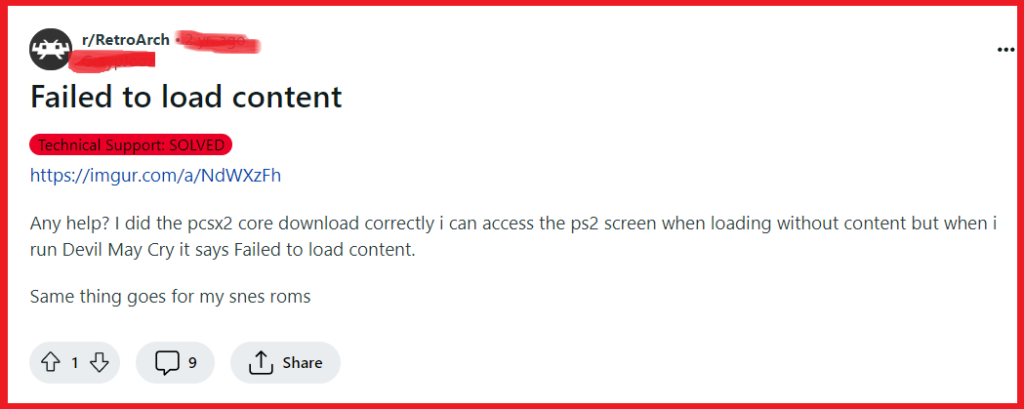Are you a gaming enthusiast who loves using RetroArch for emulating classic games, but recently encountered the frustrating “Failed to Load Content” error?
Don’t worry, you’re not alone. Many users have faced this issue, but the good news is that there are effective solutions available.
In this blog, we’ll explore the solutions and provide step-by-step instructions on how to fix it.
How To Fix RetroArch Failed To Load Content Error?

To fix RetroArch failed to load content error, you can verify BIOS and cores, update RetroArch and cores, and check file paths and permissions. Additionally, you can use correct core for content, and adjust video driver settings.
1. Verify BIOS And Cores
RetroArch relies on correct BIOS files for many of its emulators, and having the wrong or missing BIOS can result in a “Failed to load content” error.
Ensuring you have the correct BIOS files is crucial for the emulator to function properly.
- Locate and download the correct BIOS files for the system you are trying to emulate.
- Place the BIOS files in the system directory of RetroArch.
- In RetroArch, navigate to Main Menu > Load Core and select the appropriate core for your content.
- After loading the core, go to Main Menu > Information > Core Information and verify that the required BIOS files are present and detected.
2. Update RetroArch And Cores
Outdated RetroArch or cores can lead to compatibility issues, resulting in the “Failed to load content” error.
Keeping RetroArch and its cores updated ensures that you have the latest fixes and compatibility improvements.
- Open RetroArch and navigate to Main Menu > Online Updater.
- Select Update Cores to download and update the latest versions of the cores.
- Choose Update RetroArch to ensure the main application is up to date.
3. Check File Paths And Permissions
Incorrect file paths or file permissions can prevent RetroArch from accessing the content, causing the error.
It’s important to ensure that RetroArch has the correct file paths and permissions to load content.
- Confirm the directory paths in RetroArch settings match the location of your game content.
- Ensure that the files are not set to “Read-only” and that RetroArch has the necessary permissions to access them.
- If you’re using an external storage device, verify it is properly connected and readable.
4. Use Correct Core For Content
Loading content with an incompatible core will fail.
Choosing the correct core for the specific game or content you’re trying to load is essential for proper emulation.
- Open RetroArch and navigate to Load Core, then select the core that corresponds to the content you wish to play.
- Go back to the Main Menu and select Load Content, then navigate to the game file.
- Choose the game file to start it with the previously loaded core.
5. Adjust Video Driver Settings
Incompatible video driver settings can also cause content to fail to load.
Adjusting the video driver settings in RetroArch can resolve these issues.
- Navigate to Settings > Logging in RetroArch and enable both Logging Verbosity and Log to File.
- Close RetroArch to save the settings.
- Reopen RetroArch and attempt to load the game that was causing the error to generate the log file.
- Locate the log file by checking the network drive path to the “retroarch” folder for a “logs” folder, or by going to Settings > Directory > System/Event Logs in RetroArch.
- Open the log file and look for error messages that could indicate the issue, such as a mismatch between the requested OpenGL context and what RetroArch is compiled against.
- Change the video driver by going to Settings > Drivers > Video and selecting “d3d11” as the new driver.
- Close and restart RetroArch for the changes to take effect.
- Try loading the game again to see if the issue has been resolved.
6. Uninstall And Reinstall RetroArch
If none of the above solutions works, the RetroArch installation might be corrupt.
A fresh installation can resolve any deep-seated issues.
- Uninstall RetroArch from your system.
- Download the latest version of RetroArch from the official website.
- Install RetroArch, taking care to not overwrite any BIOS or content files you wish to keep.
- Configure RetroArch settings and try loading the content again.
